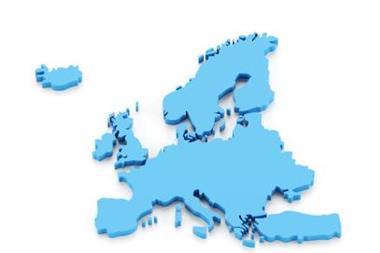What should you look for if you need to transfer your potential ELD liability? Simon Johnson explains
The EU Environmental Liability Directive (2004/53/EC) (ELD) has created new risks and exposures to liability, in turn leading to new questions for companies to ask about their insurance and any environmental cover.
The ELD entered into force on 30 April 2004 and was implemented three years to the date later in 2007. In England and Wales, this took place on 1st March 2009 through the Environmental Damage (Prevention and Remediation) Regulations 2009. The EU, in contemplating these regulations, aimed ‘to establish a common framework for the prevention and remedying of environmental damage at a reasonable cost to society…’ These regulations are therefore about protecting and restoring the environment in the event of future damage rather than dealing with historic or legacy issues, supporting the wider objective for sustainability. Although the ELD builds on the polluter pays principle, it only talks about damage to land, water, and protected species and natural habitats.
Key points to note about the ELD are:
• The ELD is about damage, however it occurs. It includes pollution, but not exclusively resulting from pollution incidents.
For example, a fire spreading outside the site boundaries to the neighbouring environment could lead to damage from emissions or from fire-water spreading contamination and residues affecting the environment, water and land.
• Pollution incidents that cause damage can be sudden and accidental, or gradual, or even a combination of the two; there is nodistinction made.
• The operator is the principal liable person and that person can have strict liability where the operations fall within those described in Annex III of the ELD, including operations under integrated pollution and prevention control regime (IPPC), waste management, etc.
• The damages that are regulated aredescribed in Annex II of the ELD.
With the exception of the first stage of any primary remediation, the rest of the damages and costs represent a new exposure for companies and operators across Europe. As yet, there are no proscriptive methods for calculating complementary and compensatory remediation. This creates significant uncertainty about the costs of any actions that will be required to be undertaken by the authority in regulating environmental damage and particularly damage to protected species and habitats.
Environmental insurance
It is unlikely that any standard public liability, general liability or property insurance programme will provide cover for any of the losses and damages under the ELD, except perhaps for some elements of primary remediation. Even then it depends on the policy providing cover for damages imposed by a regulator under regulation and not the legal claims for damage of a third party.
For those exposed to the risk of causing damage to the environment, who could be held liable, protection is available through the environmental insurance market. These markets, particularly over the last 12-18 months, have all expanded coverage to include losses and damages under the ELD or by any national legislation or country law implementing the ELD. Important points to note and questions to ask, include:
• Are there any sub-limits for environmental damage or for the compensatory and complementary damage elements?
• How does the policy cover imminent threat of damage – part of the ELD process to prevent damage?
• What is the policy trigger for environmental damage? Is it a pollution trigger or is there a separate environmental damage trigger?
“Are there any sub-limits for environmental damage or for the compensatory and complementary damage elements?
• Is it possible for the policy to recognise an
April 2007 retroactive date, the date at which the EU wanted all member states to have transposed and implemented the ELD? While some transpositions clearly state that operators will only have liability for damage occurring after the transposition date in that country, ie for England 1 March 2009, others have back-dated transposition to April 2007.
• Can business interruption costs and losses be included?
Insurance is purchased to provide protection, create (financial) certainty and respond in the event of a claim. Although early days, claims are beginning to appear and from these first experiences it is possible to report that they are:
• complex – cause, damage assessment and actions
• require immediate response and expert claims handling
• need expert liaison/communication with:
• local enforcement agencies
• communities, and
• NGOs/pressure groups
• cost more than similar damage would before the ELD. It is important that the insurer:
• has environmental underwriters
• can respond rapidly to complex environmental claims, and
• demonstrates a long-term commitment – claims may take decades!
In the future, environmental insurance may become a necessity if other countries and the EU follow Spain’s example, where they are implementing a system of compulsory financial security in 2010. This security can be met by an appropriate environmental insurance policy. The EU is committed to ruling next April (2010) on whether to impose compulsory financial security on at least those with strict liability and potential substantial exposures. At present it is a voluntary arrangement only. The ELD presents a liability and exposure to new types of damage across the EU. Operators are exposed and claims are already beginning to come through, so the risk is real. Unless a specific environmental insurance policy with coverage for these damages is part of the programme then full coverage is highly unlikely and companies risk a significant uninsured loss. Dr Simon Johnson is director UK&EMEA, Aon environmental services group



















